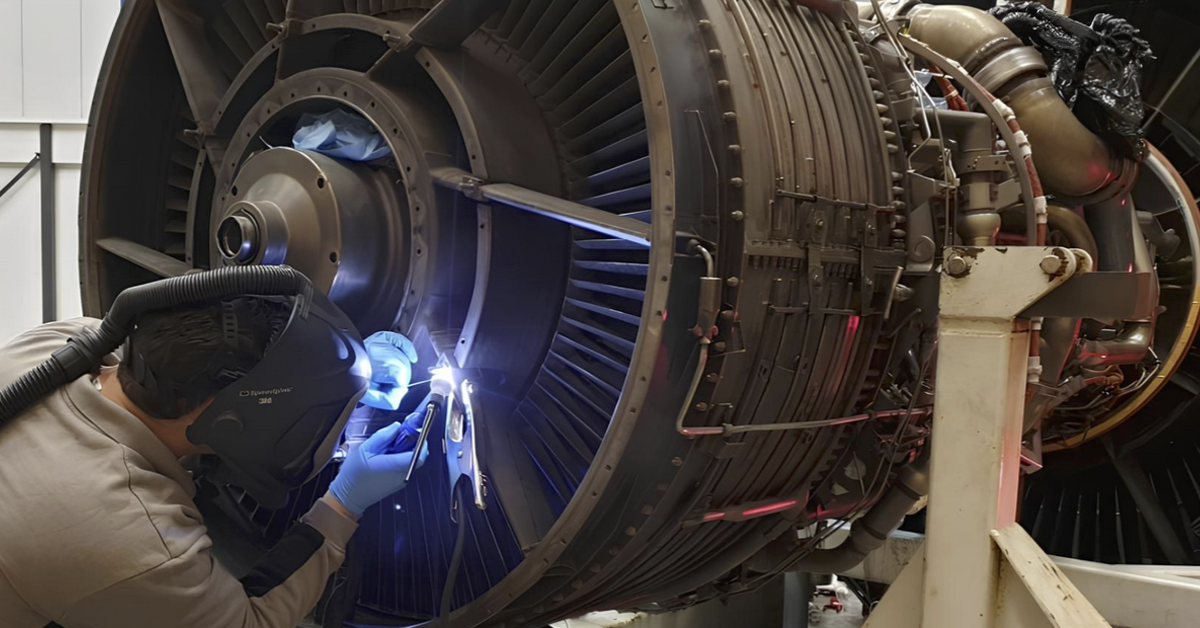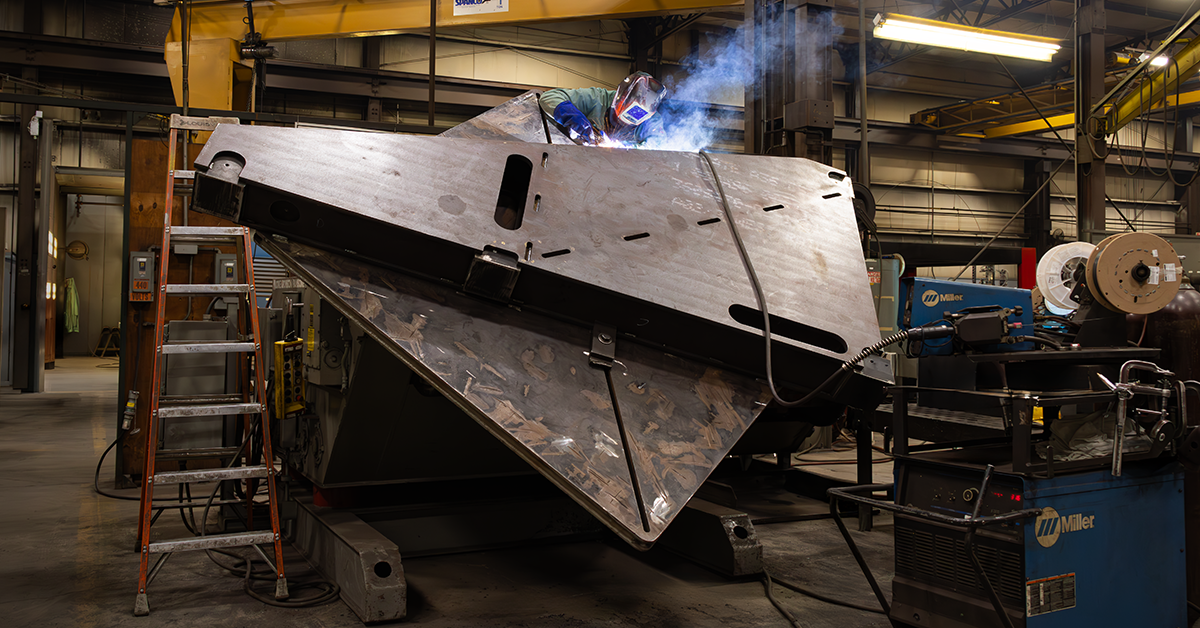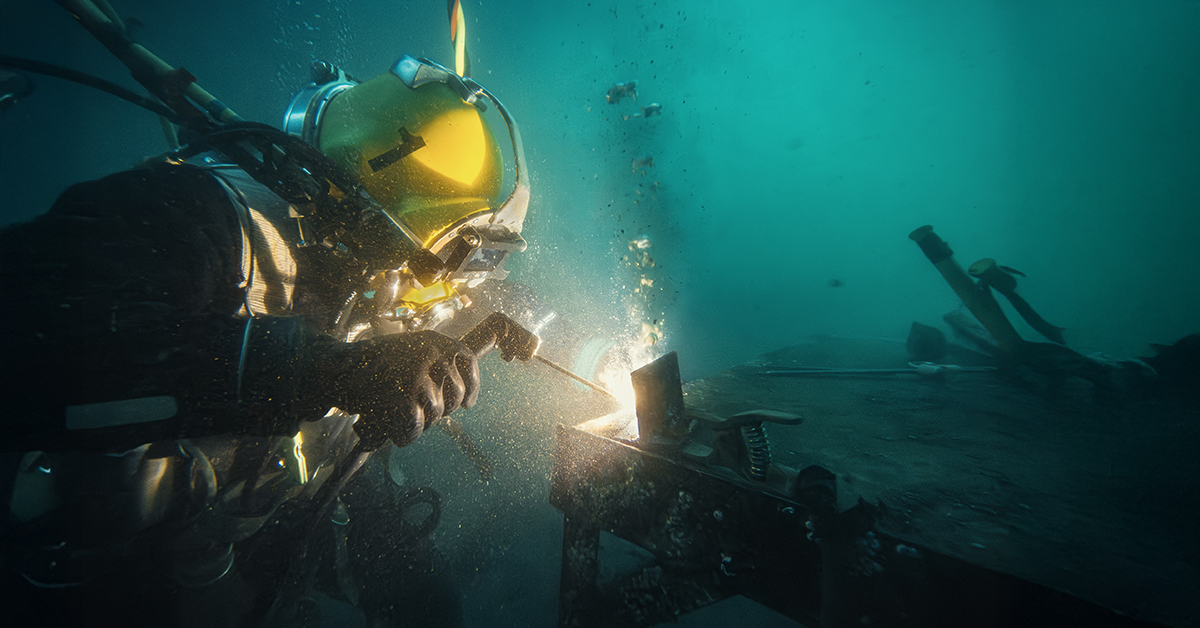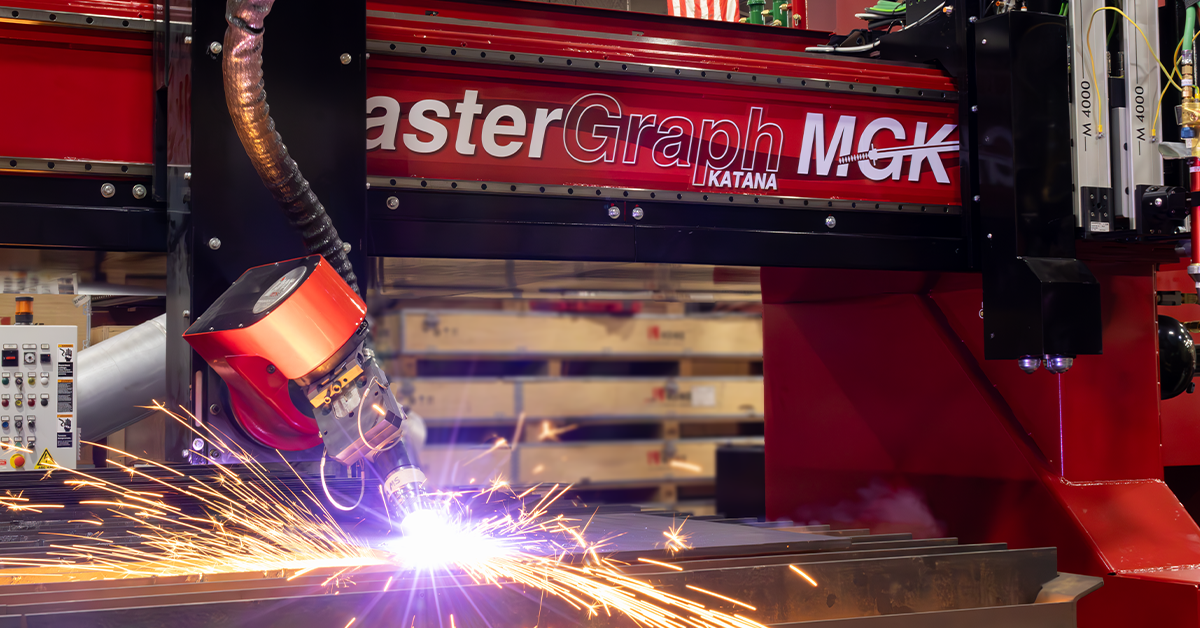The Most Challenging Jobs in the Industry: Extreme Welding
Apr 15th 2025

WELDING BEYOND LIMITS - Welding is already a skilled trade, but some jobs push the craft to its absolute limits—demanding intense precision, physical endurance, and the ability to work under hazardous and unpredictable conditions. From the ocean floor to the core of a nuclear reactor, extreme welding requires more than just know-how; it calls for specialized equipment, rigorous training, and an unshakable commitment to safety.
This blog explores the most demanding roles in industrial welding, examining the environmental challenges, processes used, how skilled welders overcome these obstacles—and how Koike’s precision-built solutions help them succeed in these high-stakes environments.
Aerospace Welding – Precision at High Altitudes

Why It’s Extreme Welding?
Welding rocket fuel tanks, engine components, and spacecraft frames requires flawless execution—there is zero tolerance for error. Aerospace welding demands micron-level precision, as even the smallest imperfection can compromise the safety and performance of an entire aircraft or mission-critical system.
High-performance materials like titanium, Inconel, magnesium alloys, and aerospace-grade aluminum are commonly used for their strength-to-weight ratios, but they’re also notoriously difficult to weld. They require precise heat control, clean environments, and often orbital or automated welding systems. Add in the challenge of tight geometries and limited access, and it’s clear why this is one of the most demanding welding sectors.
Challenges & How Welders Overcome Them:
- High Precision: TIG (GTAW) is used for its clean, strong welds and fine control.
- Exotic Metals: Special shielding gases (argon or helium) are used to prevent contamination.
- Controlled environments: Clean rooms or inert gas chambers to reduce oxidation.
- Meticulous surface preparation: Use of chemical cleaning or abrasives to remove contaminants like oil, dirt, or oxides.
- Complex Geometry: Welders work in tight, delicate areas like airframe wings.
- Rigorous Training: Certifications like AWS D17.1 ensure welders meet strict aerospace codes.
Solutions:

Koike Industrial Welding Positioners and Manipulators
Industrial welding positioners and manipulators are designed for full 360-degree rotation with high load capacity and fine-tuned control. These systems allow aerospace fabricators to rotate and position complex assemblies—like engine casings, fuel tanks, or structural frames—with pinpoint accuracy. Whether you’re performing orbital TIG welds on cylindrical components or tackling intricate joints on a fuselage subassembly, our equipment ensures:
- Consistent weld angles
- Reduced operator fatigue
- Improved weld quality and repeatability
Koike Fiber Laser and Plasma Cutting Systems
Before the weld even begins, Koike’s fiber laser and high-definition plasma cutting systems deliver the clean, precise cuts needed for today’s demanding aerospace alloys. These cutting systems ensure:
- Tight dimensional tolerances for perfect fit-up
- Smooth edges and optional bevel cutting for weld prep
- Less distortion and reduced filler metal use
When parts are cut to spec, there’s less distortion during welding, less filler metal needed, and fewer opportunities for defects. That precision up front leads to stronger, lighter, and safer finished components—a must in aerospace applications.
Underwater Welding – The Deepwater Risk

Why It’s Extreme Welding?
Underwater welding is among the most dangerous and demanding welding jobs in the world. These welders are also trained commercial divers, working in cold, high-pressure environments with limited visibility—and the constant risk of electric shock.
From oil rigs and ship hulls to bridge supports and dams, underwater welders maintain the infrastructure that keeps global industries afloat. Whether using wet welding directly in water or dry welding inside sealed hyperbaric chambers, their work must be precise and durable—often done entirely by feel in murky depths.
Welding Processes Used:
- Wet welding SMAW (Stick) Most common for open water work.
- Dry welding GTAW (TIG), MIG, or SAW Done inside sealed, dry chambers for higher-quality welds.
Challenges & How Welders Overcome Them:
- Pressure & Temperature: Welders must undergo rigorous training to handle extreme conditions.
- Electric Shock Risks: They use specially insulated welding equipment designed for water environments.
- Limited Visibility: Divers rely on highly controlled movements and experience to create strong welds in murky conditions.
Solutions:

Underwater welders can’t afford to struggle with poorly fitting components. Koike’s CNC plasma and fiber laser cutting systems ensure each part is cut to exact tolerances—minimizing filler metal use and time underwater. These systems ensure:
- Precision fit-up for fast, accurate welding
- Clean edges with minimal grinding
- Bevel cutting options for optimal joint prep
In extreme environments, proper part prep isn’t optional—it’s essential. With Koike, every weld starts with precision from the surface down.
Nuclear Welding – Safety, Shielding, and Zero Margin for Error

Why It’s Extreme Welding?
Welding inside nuclear power plants and reactor facilities is one of the most regulated and precision-critical roles in the industry. Welders often work in high-radiation zones, wearing full protective gear and limited by strict exposure time limits. Many operations take place underwater, where the surrounding liquid acts as shielding—combining the complexity of nuclear protocols with underwater welding hazards.
Reactor components can remain hot even during maintenance shutdowns. Work is often confined to tight spaces like containment vessels and steam generator manways, requiring contortion, planning, and fume control strategies tailored to prevent contamination.
Challenges & How Welders Overcome Them:
- Radiation Exposure: Welders use protective suit, limit work shifts, use remote welding systems and robotic arms to minimize exposure.
- Heat and Confined Space: Careful ventilation and safety planning.
- Zero Defects Allowed: Welds undergo extensive non-destructive testing (NDT), including X-ray inspections.
- Specialized Qualifications: Welders certify under ASME Section IX, with procedure-specific testing based on project materials, positions, and codes.
Why Koike Makes the Difference?
Koike equipment is SIMPLY BETTER BUILT to help welders overcome these challenges. Whether it’s precision cutting with fiber lasers, beveling and positioning heavy assemblies, Koike provides the reliability and accuracy needed to meet industrial welding and cutting demands—on land, underwater, or in orbit.
